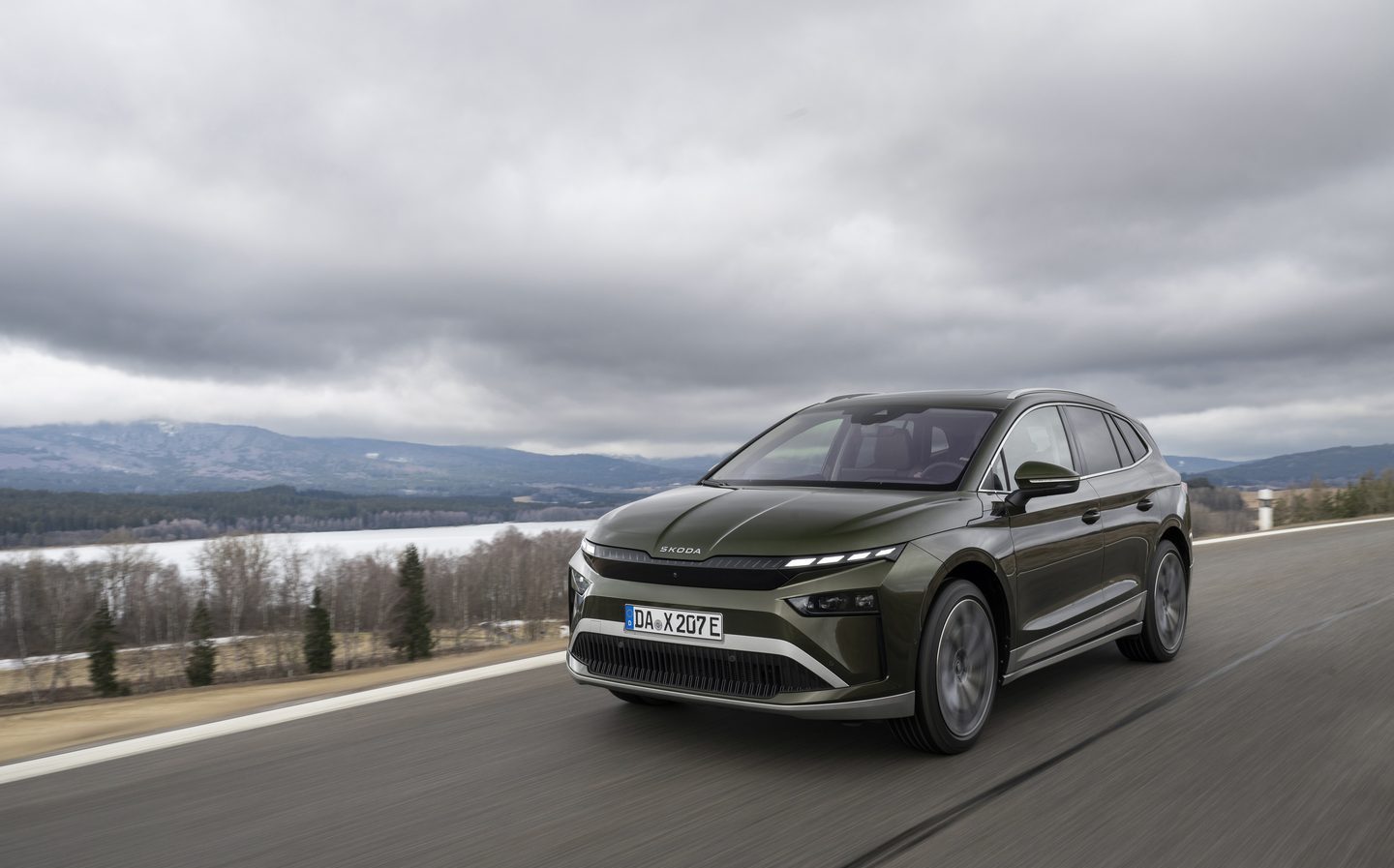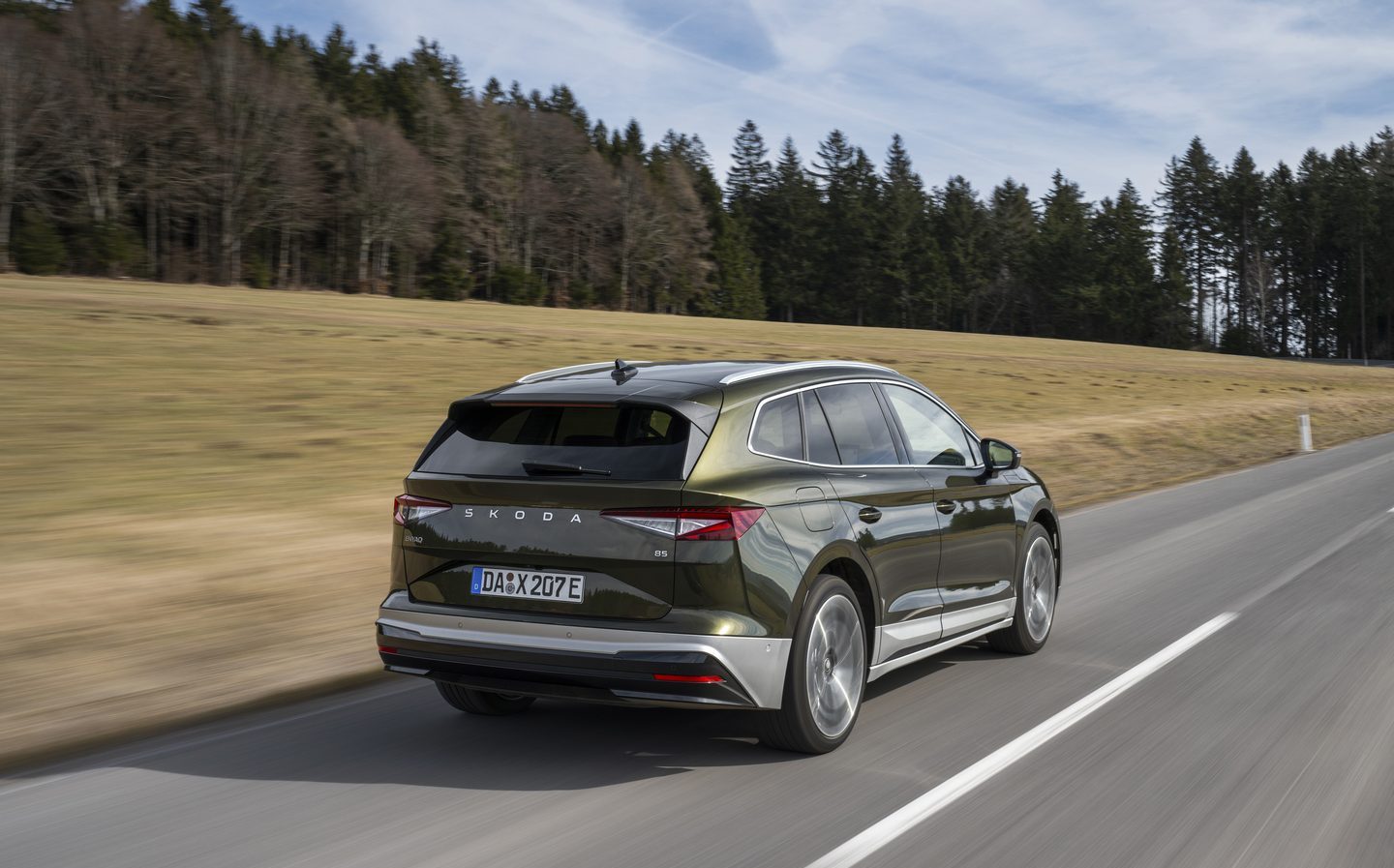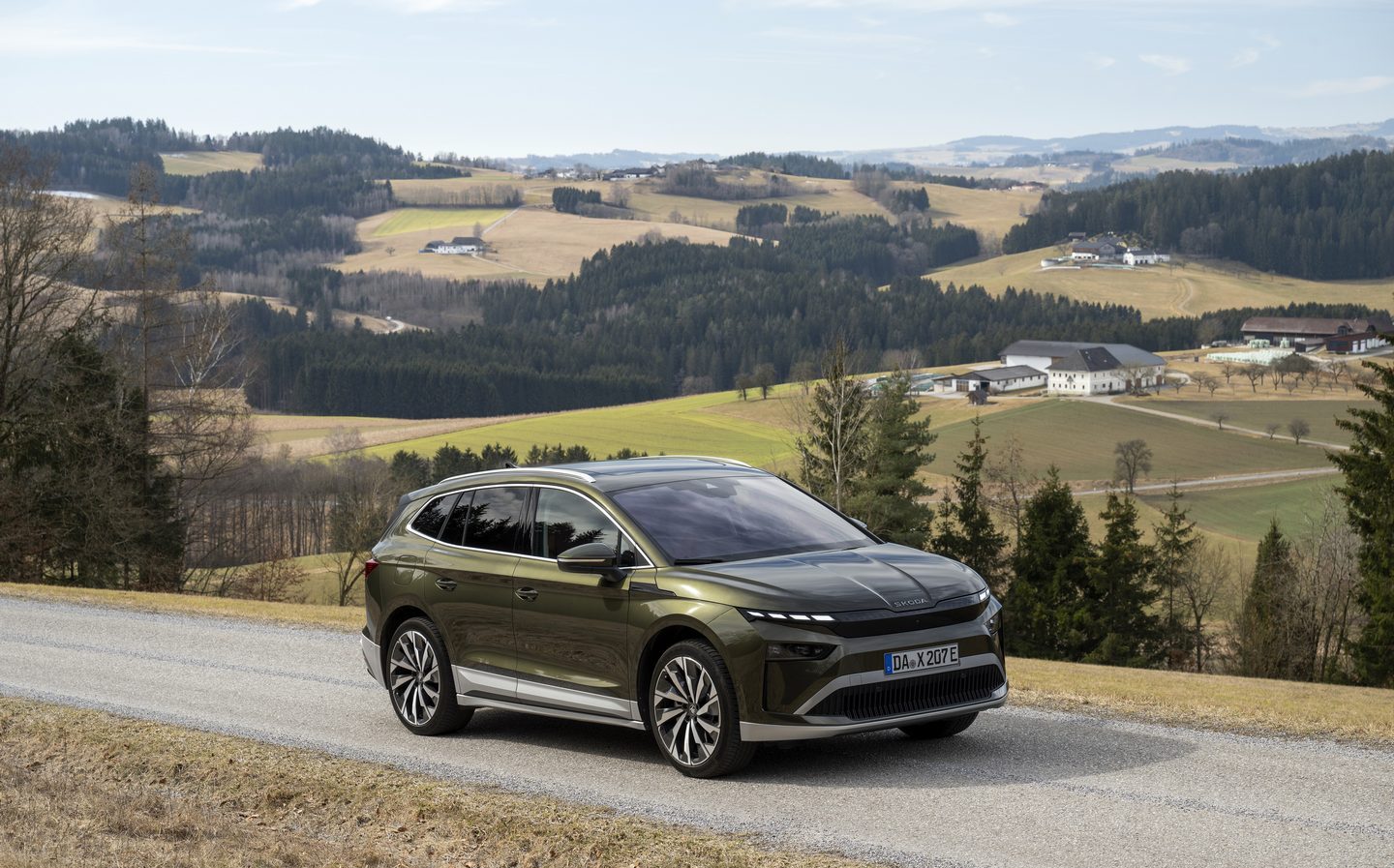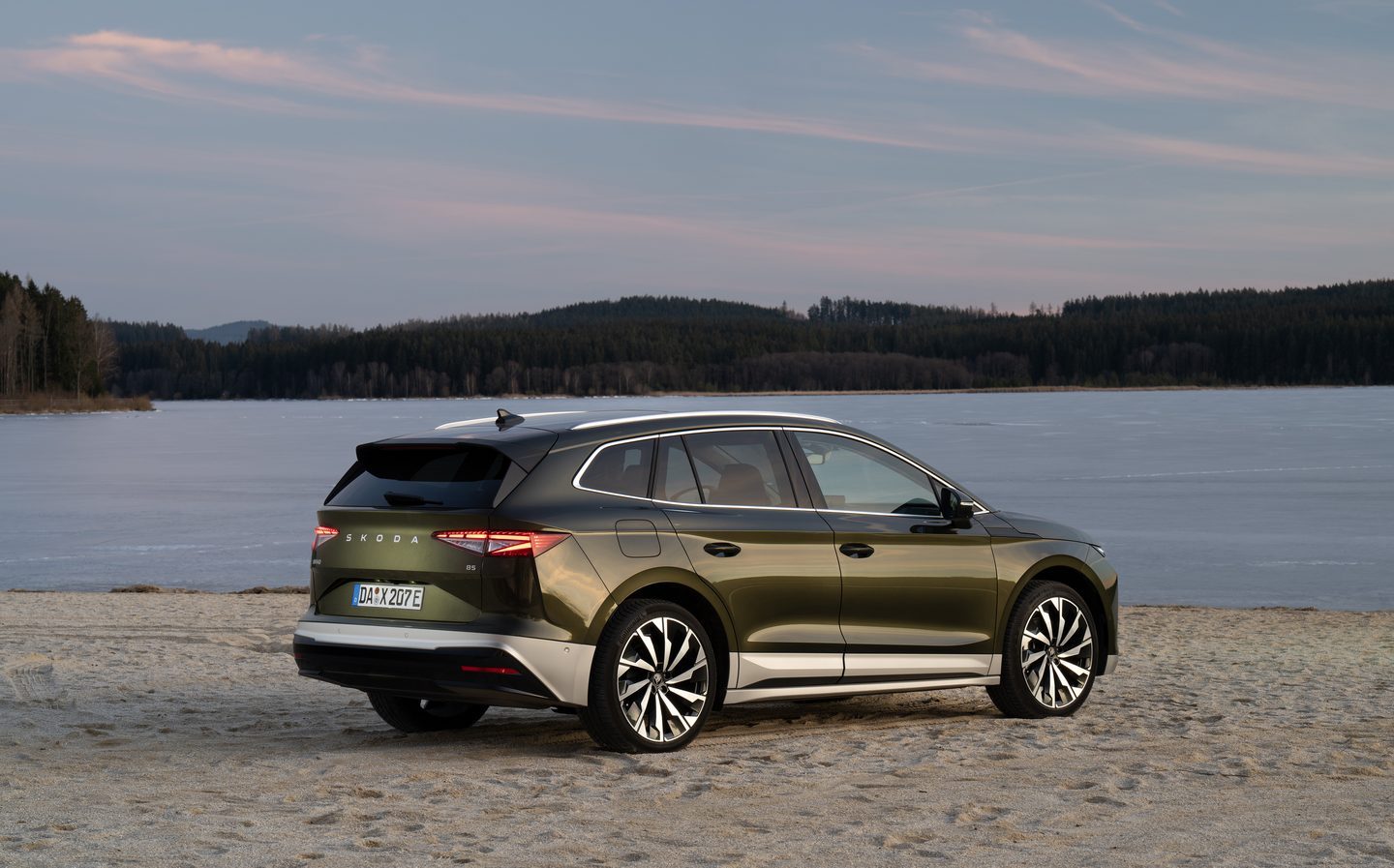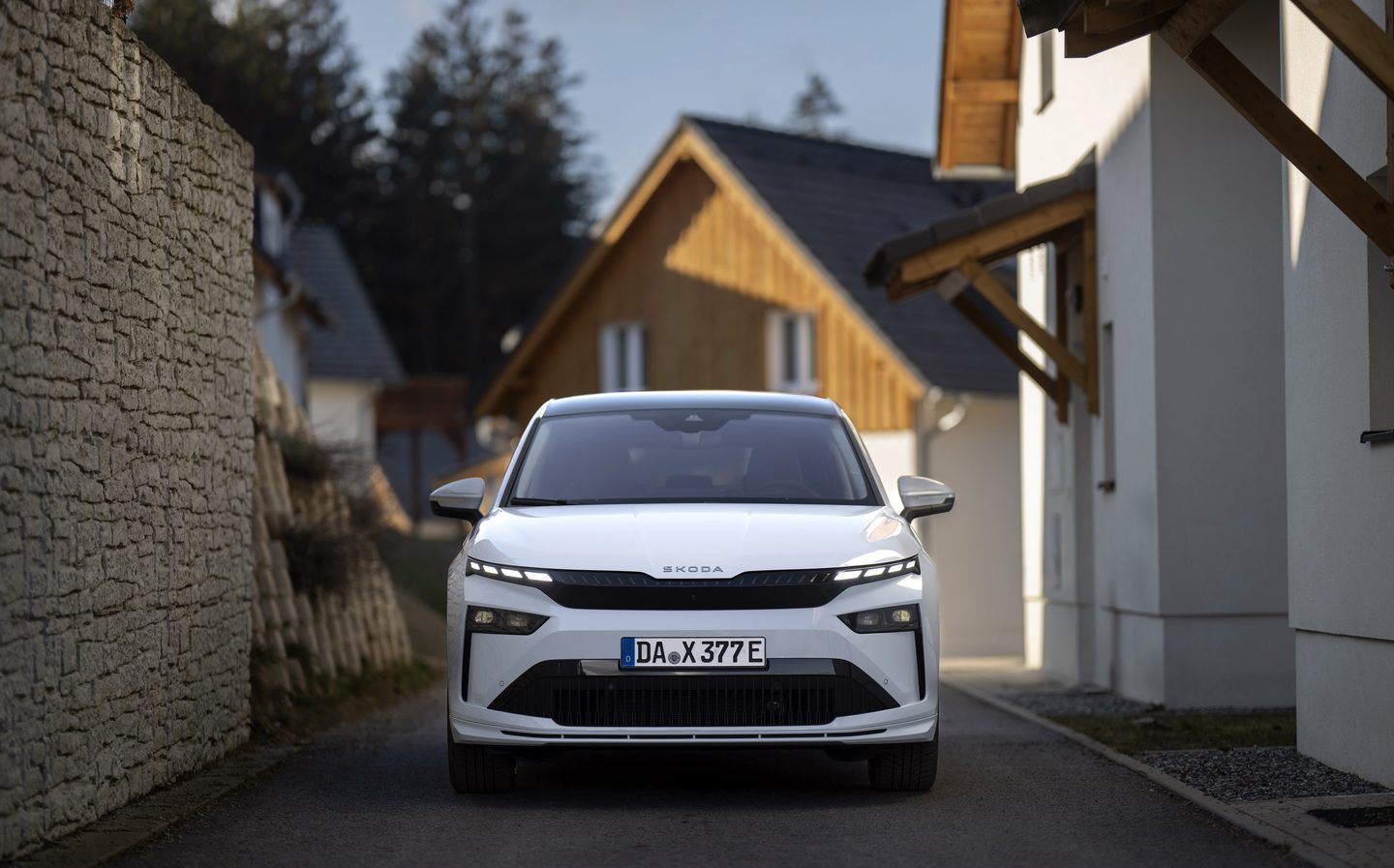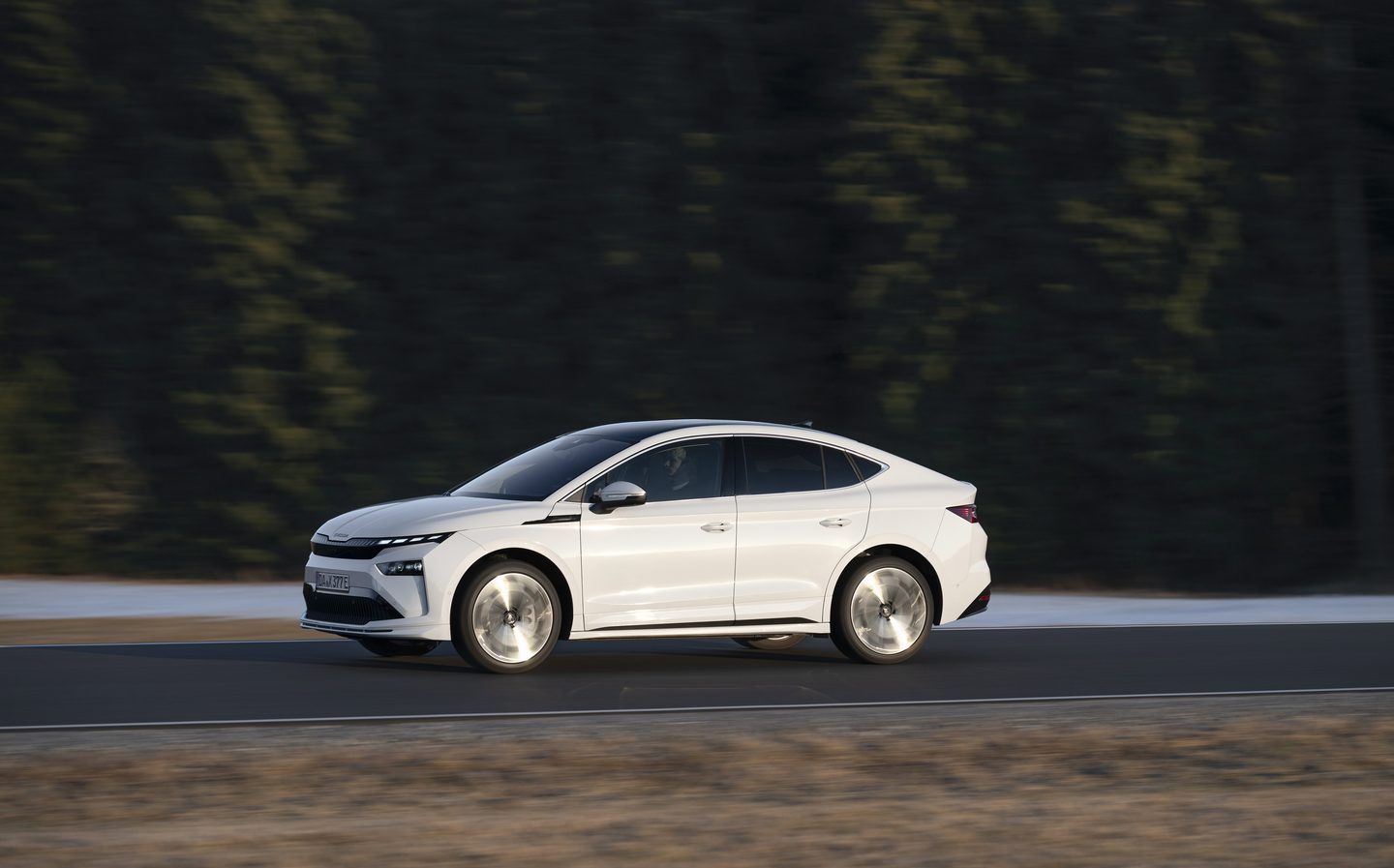Skoda Enyaq 2025 review: Same book, different cover for electric SUV
Running to stand still
All my life, I’ve been told not to judge a book by its cover, but sometimes that’s a difficult thing to do. In the case of the new Skoda Enyaq, what else can you do? Yes, the Enyaq has inherited its nose design from the smaller Elroq, but that’s pretty much all that’s especially new. And with an ever-growing cadre of rivals to challenge Skoda’s flagship electric SUV, will that be enough to keep fending off the VW ID.4, the Ford Explorer and even the new MGS5 EV?
Well, if you like the design, the answer to that may very well be “yes”. Personally, I’m not completely sold on the new shape but don’t find it repulsive either, with the black panel below the bonnet shut line and the lights that merge into it; all pretty neat and very modern. But I can’t help thinking of it as an unnecessary modification, because the old Enyaq’s grille was hardly old-school or ugly. Unless you went for the chintzy Crystal Face illuminated grille option, that is.
But Skoda tells us that the new design makes the Enyaq more aerodynamic than before, and that should — in theory, at least — have an impact on its range (how far it can go between charges).
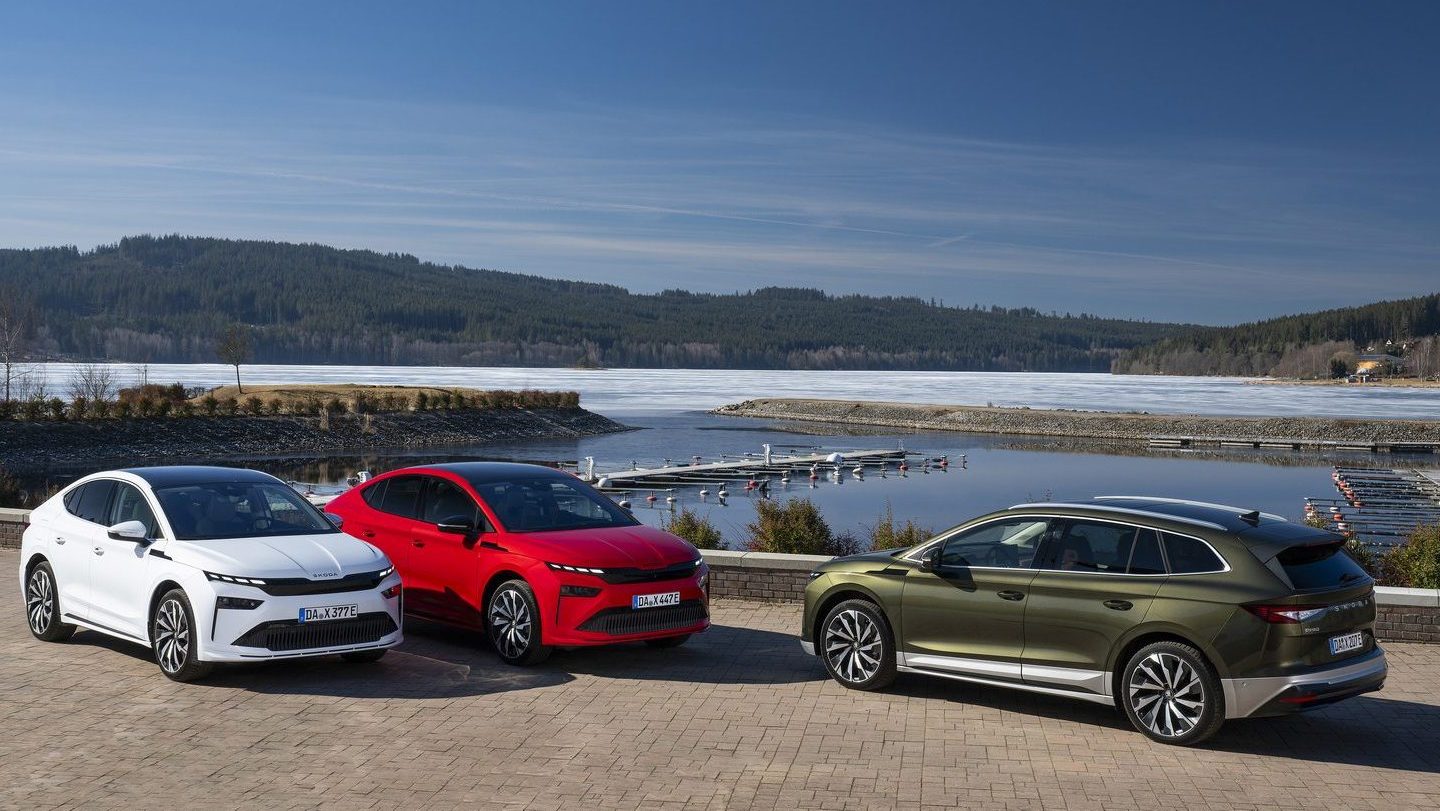
Sadly, Skoda can’t use the same excuse for the new two-tone paint design that’s applied to most Enyaqs, with the notable exceptions of the more sportily-styled Sportline models and the Coupé versions, with their swooping rooflines.
The idea is that the Unique Dark Chrome lower panels (which don’t appear especially unique, dark or chrome-like) give the car a more robust off-road appearance, but to my eyes, they look like they’re hiding some cheaply repaired accident damage with parts from a different-coloured car. It’s a shame, really, that Skoda has done it, because the dark green paint option would look great without.
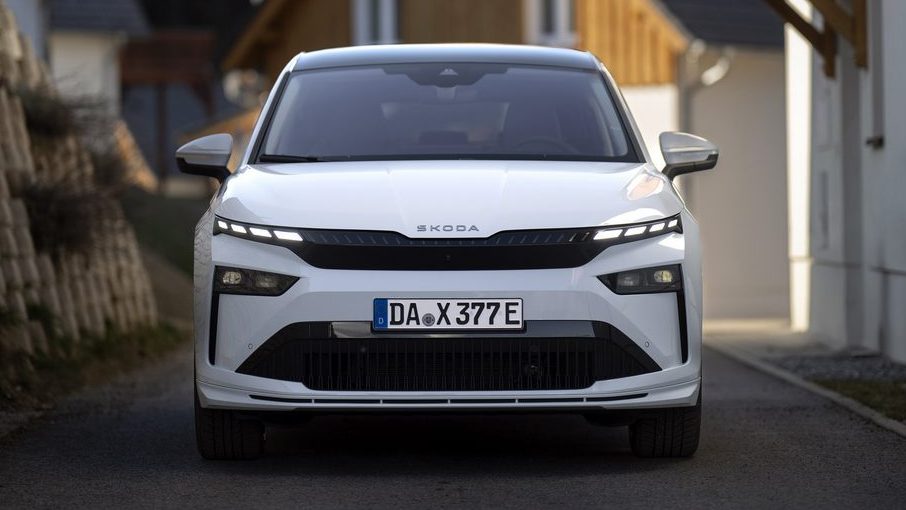
Elsewhere, Skoda has changed the bumpers, the headlights and the wheel designs, making barely any difference in the process, and there’s some new Skoda lettering that replaces conventional badging. In short, nothing ground-breaking.
But the Enyaq has grown very slightly, thanks in no small part to its new bumpers, and that extra bulk elevates it further from the new, smaller Elroq.
Not that you’d notice the fractional growth spurt from inside the cabin. In there, very little has changed, with a similar dashboard design that focuses on the central touchscreen and digital instrument display.
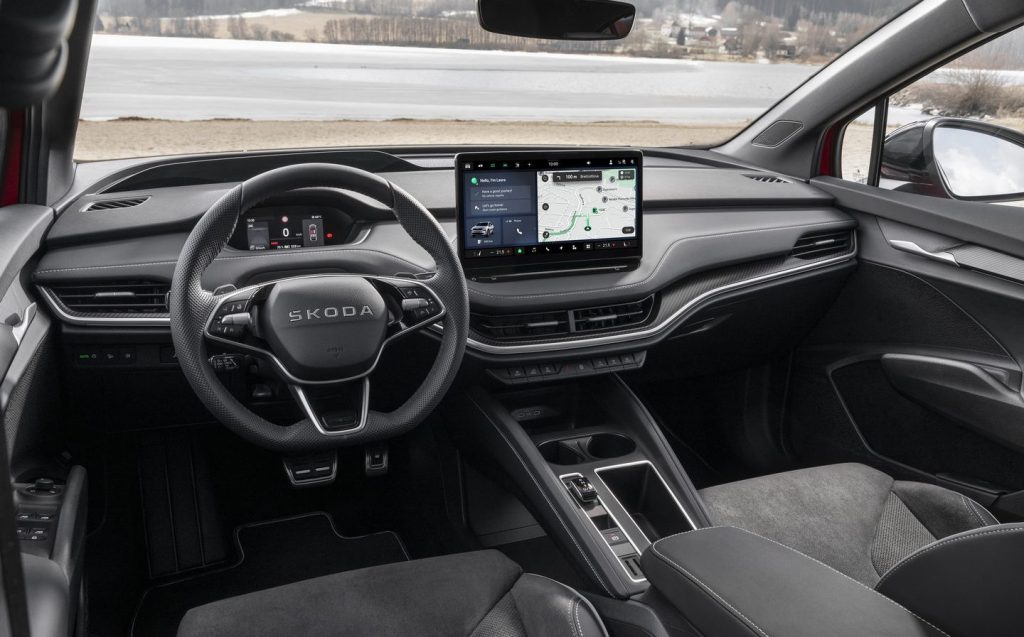
In Skoda’s defence, the brightwork is now finished in darker chrome and you get the Skoda lettering again, as well as some new interior colour schemes, including one with bold red seat belts and grey upholstery. But aside from that, it’s all very familiar.
That’s an issue, mind you, because the Enyaq’s interior was always one of the most appealing of all the medium-sized family SUVs that make up its peers. And it still has the same build quality and style that have served it so well since its introduction.
Happily, the technology has improved in recent years; early Enyaqs had fiddly and awkward infotainment technology but the latest models have more user-friendly menus, more configurable home screens and better access to various functions, as well as a sharp head-up display and a cluttered — but quite clear —instrument cluster.
The Enyaq also comes with the same choice of practical SUV or aerodynamic coupé body styles, and though each has its own strengths and weaknesses, neither is exactly short of space.
Opt for the conventionally shaped Enyaq, and you get a big boot that’s more than capable of carrying a family’s luggage, and while the coupé’s boot is only marginally smaller than that of the standard Enyaq on paper, the sloping rear window means it’s a little less capable of carrying bulky items. There’s fractionally less rear headroom as well.
But then, the standard Enyaq has plenty of space in the back, with more than enough clearance for even tall passengers’ heads, as well as enough legroom to host a small football tournament.
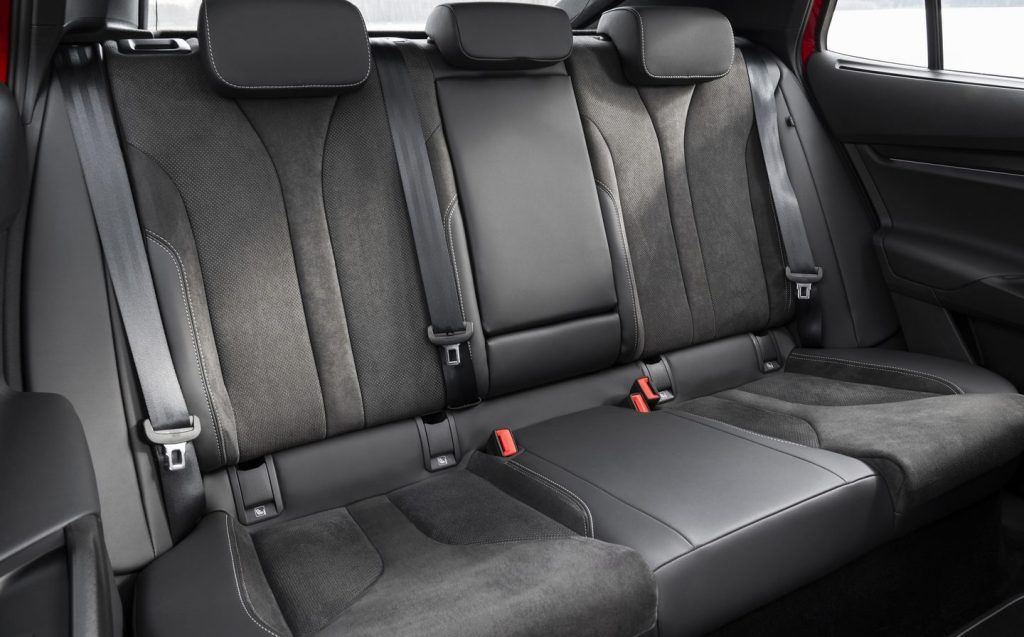
But the big advantage of the coupé is that it’s a bit slipperier through the air than the SUV, particularly with Skoda’s modifications to the front end of the car, and that means — at least in theory — that it’ll go further on a charge, especially at motorway speeds.
However, the coupé isn’t available with the smallest (and therefore cheapest) battery in the Enyaq range. Buyers get a choice of three SUV variants and two coupés, with the basic “60” model only offered in the more conventional shape. That version has a battery with an energy capacity of 63kWh, powering a 201bhp rear-mounted electric motor and good for an official range of 268 miles (although that’s going to be less in the real world, depending on conditions).
But the larger “85” version, which is expected to be the most popular, will be offered in SUV and coupé forms, using its 82kWh battery (77kWh of that is useable) to drive a 282bhp electric motor and offer 359 miles of official range. Choose the Enyaq Coupé 85 and that increases to 365 miles, which will definitely have some appeal for those doing longer journeys.
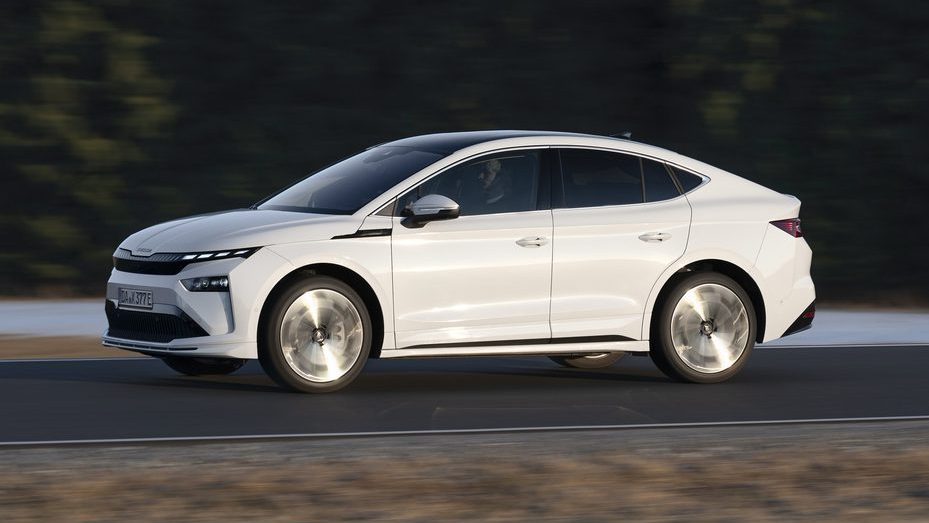
Again, though, your chances of achieving that in the real world are limited, to say the least. On our test, which took place on a rather chilly spring day, we managed around 200 miles of range. But road-testing is hard work for cars, and we never expect brilliant efficiency when we’re sampling the car’s handling and performance. On a warmer day and with a less leaden right foot, we’d probably have managed 250 miles on a charge. The coupé might add a few more miles at motorway speeds, but the difference is unlikely to be huge.
Recharging speeds? If you’re able to do so at home, using a proper EV wallbox charger, topping up the battery completely from flat will take around 12 hours, while charging from 10 to 80 per cent on a public rapid charger will take about half an hour.
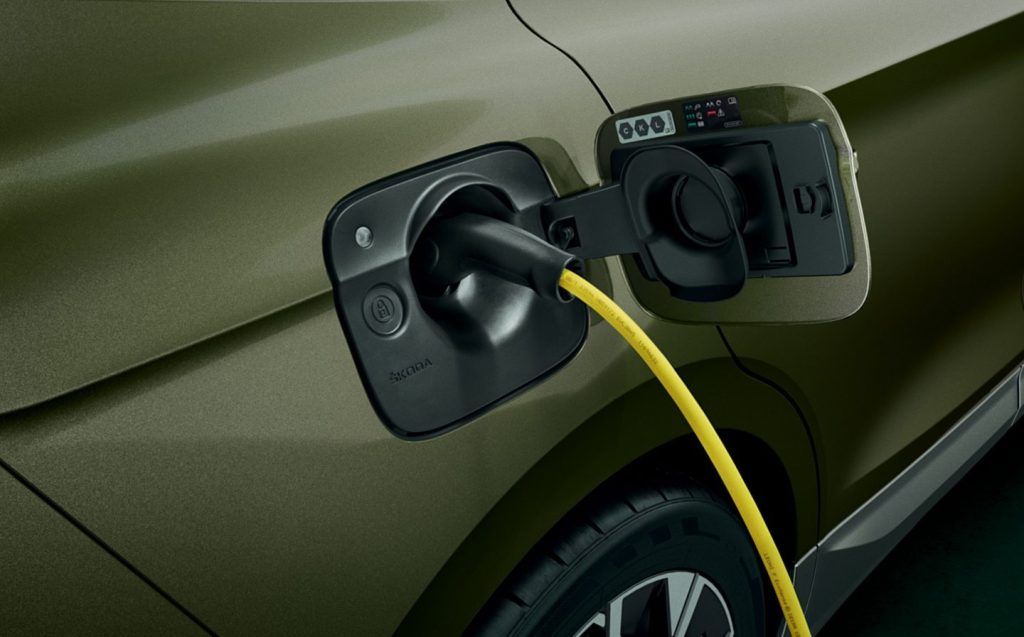
Confusingly, the 135kW maximum charge speed feels a little low, particularly when the 85x — ostensibly just an all-wheel-drive version of the 85 — can charge at up to 175kW, but apparently that’s because of the battery chemistry. Although the two batteries are the same in terms of capacity, they’re made differently, which gives the 85 a more constant rate of charge than the 85x’s battery, which charges up quickly for a brief period, then more slowly for the rest of the time. As a result, both batteries take a similar amount of time to replenish using a rapid charging point.
And you will need to charge more often with the 85x. Although it has no more power than the 85 (both cars get 282bhp) it has another motor on the front axle, giving it all-wheel-drive traction. That’s obviously useful when snow falls or in muddy fields, but the catch is that it’s less efficient — official figures suggesting the 85x Coupé only achieves 334 miles on a single charge, so it’s only really worth choosing if you’re going to use the car somewhere where road conditions regularly get slippery.
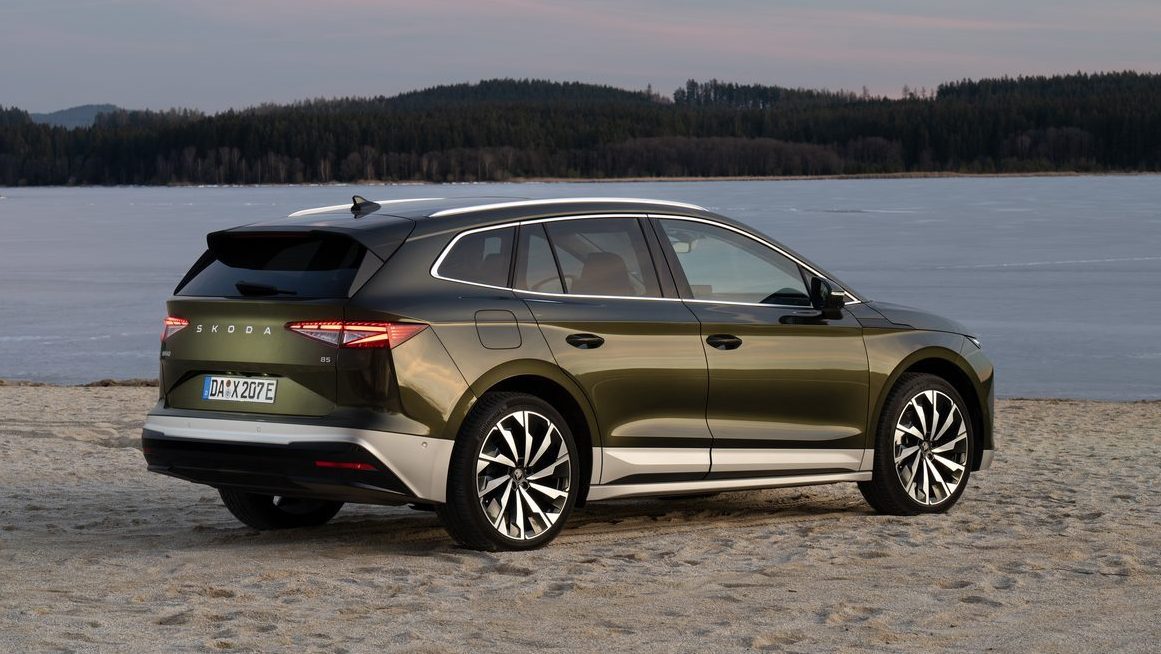
Having said all that, while charging and range are impacted by the choice of powertrain, it doesn’t seem to make much difference to the Enyaq’s ride and handling. Yes, the 85 and 85x are a bit heavier and a bit firmer on the road, but if you choose the Dynamic Chassis Control (DCC) option fitted to our test car, the Comfort mode can reduce that firmness noticeably. It still struggles with the odd pothole around town, but rides neatly and tidily at higher speeds.
The problem with that is the body rolls quite a lot in corners, and it does so in a way that doesn’t feel entirely controlled. Opt for the Sport setting and things improve noticeably, though, and with precise steering, the car fills you with plenty of confidence, regardless of which mode you’re in.
The trick to making the most of the Enyaq is to leave the suspension in Comfort mode when you’re on the motorway, then switch to the Sport setting if you want to go faster. Most owners will just leave it in Normal mode, and that does strike a decent balance between handling and comfort.
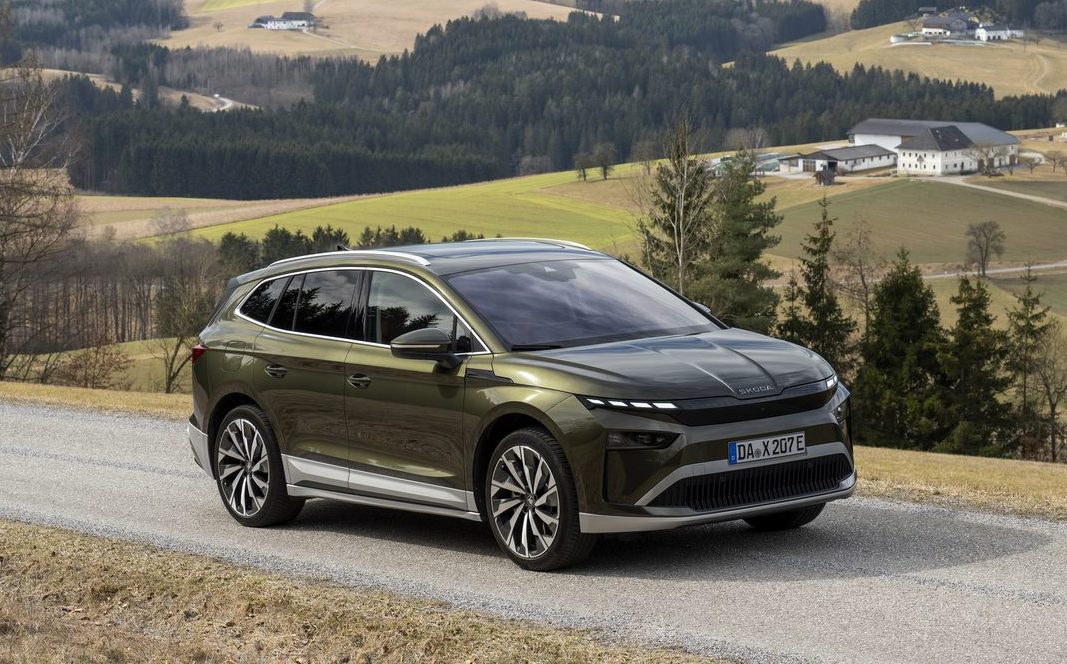
So far, then, it’s so similar to the old Enyaq. Until, that is, you touch the brakes. The old car’s brakes were a bit of a weak spot, and it’s been a while since I drove the old model, but I don’t remember the Enyaq’s brakes being this alarmingly short of feel. It can be the case with electric cars, that they are compromised in linear brake feel by the need for combining energy-efficient regenerative braking with the stopping power of old-fashioned discs and pads, but the Enyaq felt reluctant to slow itself down. Decent lumps of pedal travel elicited relatively small responses, and it made the car feel every kilo of its two-and-a-bit-tonne kerb weight. Not ideal when you’re barrelling towards a corner.
It isn’t the end of the world, and it’s one of only two main problems with the new-look Enyaq. The other is its price, which starts at just under £39,000. That makes the base Enyaq almost £8,000 more expensive than the cheapest version of the smaller Elroq, and about the same price as the longer-range Elroq 85 Edition. All of which means entry-level Enyaq models are a bit tricky to justify.
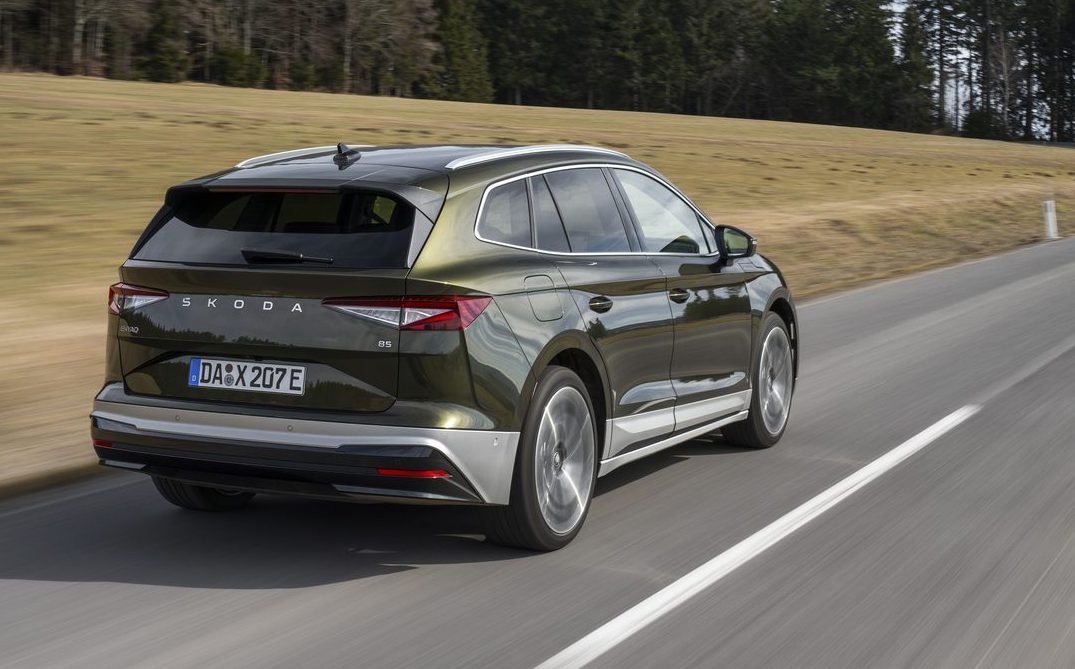
The more upmarket models make a bit more sense, even if they are quite specification-dependent. The most appealing Enyaq variants — the 85 Edition models — cost a chunky £44,245 before options, and the must-haves add to that considerably. The heat pump (which reduces the energy required for air conditioning) is a £1,000 option, while the DCC comes as part of the Maxx package and costs £3,950 on the Edition models, or £1,700 on Sportlines.
So, the car you want will set you back around £50,000, and that’s roughly on a par with the equivalent VW ID.4. Hardly the value for which Skoda is so well known.
Nevertheless, it must be said that the standard kit is pretty generous, with every model getting alloy wheels, heated front seats and a heated steering wheel, as well as three-zone climate control and a reversing camera.
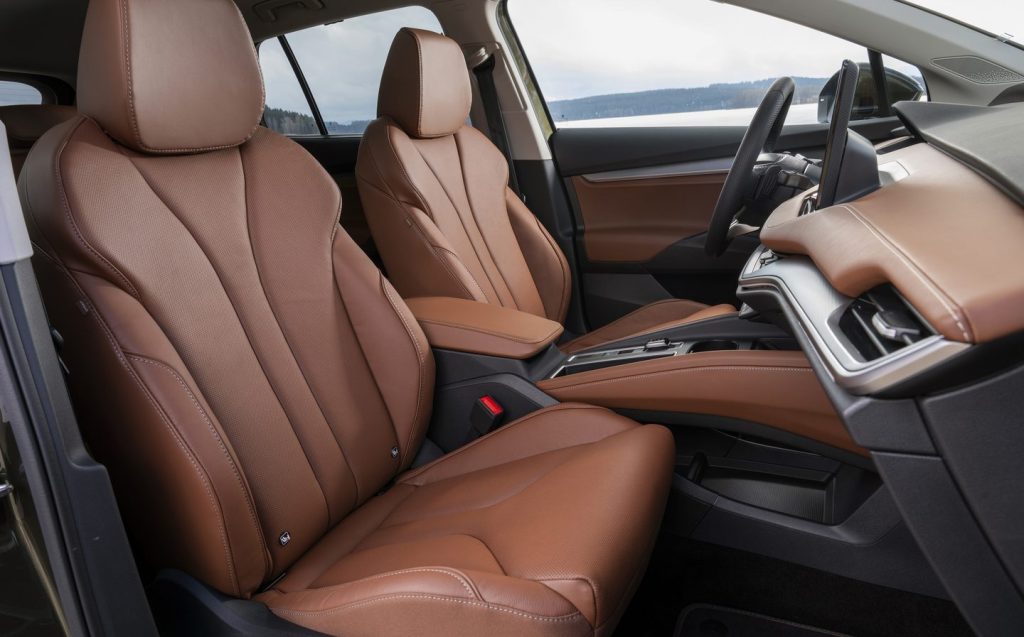
Keyless entry and wireless charging are standard, too, but mid-range Edition versions add more upmarket headlights, while the sportier Sportline gets a head-up display, sports suspension and a Canton sound system.
But even with all that kit, the Enyaq’s appeal has diminished through no fault of its own. It’s still a very competent, capable and appealing electric car — and one I’d choose over the VW ID.4 for sure. I’d probably pick one ahead of the Ford Explorer, too. But the arrival of the Elroq has eroded the advantages of the Enyaq, particularly in lowlier forms.
This is still a very good car, then, and arguably still the best in its class, but it’s no longer streets ahead of the competition.
Related articles
- If you were interested in our review of the updated Skoda Enyaq, you might like to read our first drive review of the Skoda Elroq prototype
- Also check out this review of the 2024 Skoda Superb iV estate
- And don’t miss these details about the Skoda Kodiaq, which gets plug-in hybrid power with 62+ miles electric range
Latest articles
- F1 2025 calendar and race reports: The new Formula One season as it happens
- Seven great automotive events to visit this summer, from F1 to art and champagne
- Watch new Porsche 911 GT3 smash Nürburgring record for manual cars
- Skoda Elroq 2025 review: Czech carmaker can’t seem to miss with its electric family cars
- Five best electric cars to buy in 2025
- Should I buy a diesel car in 2025?
- Zeekr 7X AWD 2025 review: A fast, spacious and high tech premium SUV — but someone call the chassis chief
- Denza Z9GT 2025 review: Flawed but sleek 1,062bhp shooting brake from BYD’s luxury arm
- Extended test: 2024 Renault Scenic E-Tech review


